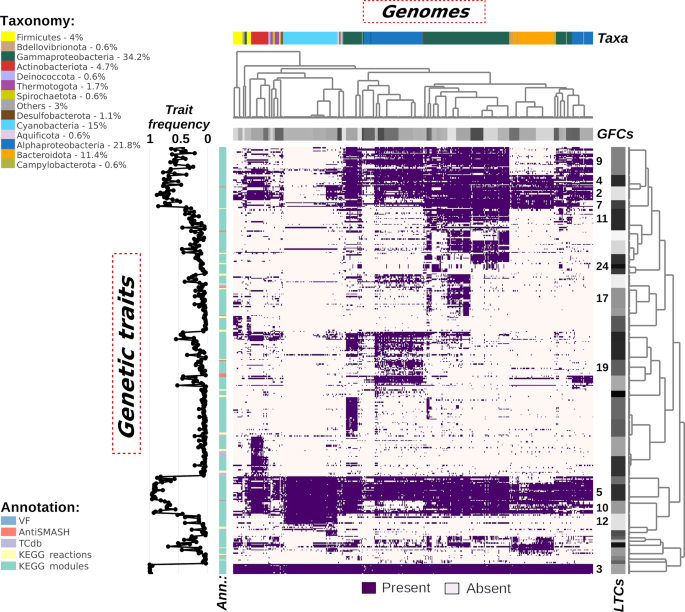
- Select a language for the TTS:
- UK English Female
- UK English Male
- US English Female
- US English Male
- Australian Female
- Australian Male
- Language selected: (auto detect) - EN
Play all audios:
ABSTRACT Radiocarbon dating has been fundamental to the study of human cultural and biological development over the past 50,000 yr. Two recent developments in the methodology of radiocarbon
dating show that the speed of colonization of Europe by modern human populations was more rapid than previously believed, and that their period of coexistence with the preceding Neanderthal
was shorter. Access through your institution Buy or subscribe This is a preview of subscription content, access via your institution ACCESS OPTIONS Access through your institution Subscribe
to this journal Receive 51 print issues and online access $199.00 per year only $3.90 per issue Learn more Buy this article * Purchase on SpringerLink * Instant access to full article PDF
Buy now Prices may be subject to local taxes which are calculated during checkout ADDITIONAL ACCESS OPTIONS: * Log in * Learn about institutional subscriptions * Read our FAQs * Contact
customer support SIMILAR CONTENT BEING VIEWED BY OTHERS CHRONOMETRIC DATA AND STRATIGRAPHIC EVIDENCE SUPPORT DISCONTINUITY BETWEEN NEANDERTHALS AND EARLY _HOMO SAPIENS_ IN THE ITALIAN
PENINSULA Article Open access 13 September 2024 MULTI-METHOD DATING REVEALS 200 KA OF MIDDLE PALAEOLITHIC OCCUPATION AT MARAS ROCK SHELTER, RHÔNE VALLEY, FRANCE Article Open access 03
September 2024 ABSOLUTE DATING OF THE EUROPEAN NEOLITHIC USING THE 5259 BC RAPID 14C EXCURSION Article Open access 20 May 2024 REFERENCES * Aitken, M. J. _Science-based Dating in
Archaeology_ (Longmans, London, 1990) Google Scholar * Bronk Ramsey, C., Higham, T. & Leach, P. Towards high-precision AMS: progress and limitations. _Radiocarbon_ 46, 17–24 (2004)
Article Google Scholar * Stringer, C. Modern human origins: progress and prospects. _Phil. Trans. R. Soc. Lond. B_ 357, 563–579 (2002) Article Google Scholar * Bar-Yosef, O. in _The
Geography of Neandertals and Modern Humans in Europe and the Greater Mediterranean_ (eds Bar-Yosef, O. & Pilbeam, D.) 107–156 (Peabody Museum of Harvard University, Peabody Museum
Bulletin 8, Cambridge, Massachusetts, 2000) Google Scholar * Mellars, P. Neanderthals and the modern human colonization of Europe. _Nature_ 432, 461–465 (2004) Article ADS CAS Google
Scholar * Forster, P. Ice ages and the mitochondrial DNA chronology of human dispersals: a review. _Phil. Trans. R. Soc. Lond. B_ 359, 255–264 (2004) Article Google Scholar * Forster, P.
& Matsumura, S. Did early humans go north or south? _Science_ 308, 965–966 (2005) Article CAS Google Scholar * Bronk Ramsey, C., Higham, T., Bowles, A. & Hedges, R. Improvements
to the pretreatment of bone at Oxford. _Radiocarbon_ 46, 155–163 (2004) Article Google Scholar * Jöris, O., Alvarez Fernández, E. & Weninger, B. Radiocarbon evidence of the Middle to
Upper Palaeolithic transition in southwestern Europe. _Trabajos Prehistoria_ 60, 15–38 (2003) Article Google Scholar * Voelker, A. H. L. et al. Correlation of marine 14C ages from the
Nordic seas with the GISP2 isotope record: implications for 14C calibration beyond 25 ka bp. _Radiocarbon_ 40, 517–534 (1998) Article CAS Google Scholar * Kitagawa, H. & van der
Plicht, J. Atmospheric radiocarbon calibration to 45,000 yr bp. Late Glacial fluctuations and cosmogenic isotope production. _Science_ 279, 1187–1190 (1998) Article ADS CAS Google Scholar
* Beck, J. W. et al. Extremely large variations of atmospheric 14C concentration during the last glacial period. _Science_ 292, 2453–2458 (2001) Article ADS CAS Google Scholar * Bard,
E., Ménot-Combes, G. & Rostek, F. Present status of radiocarbon calibration and comparison records based on Polynesian corals and Iberian Margin sediments. _Radiocarbon_ 46, 1189–1202
(2004) Article CAS Google Scholar * Shackleton, N. J., Fairbanks, R. G., Chiu, T. & Parrenin, F. Absolute calibration of the Greenland time scale: implications for Antarctic time
scales and for delta 14C. _Quat. Sci. Rev._ 23, 1513–1522 (2004) Article ADS Google Scholar * Fairbanks, R. G. et al. Radiocarbon calibration curve spanning 0 to 50,000 years BP based on
paired 230Th/234U/238U and 14C dates on pristine corals. _Quat. Sci. Rev._ 24, 1781–1796 (2005) Article ADS Google Scholar * Hughen, K. et al. 14C activity and global carbon cycle changes
over the past 50,000 years. _Science_ 303, 202–207 (2004) Article ADS CAS Google Scholar * van der Plicht, J. et al. NotCalO4-comparison/calibration 14C records 26–50 cal. kyr bp.
_Radiocarbon_ 46, 1225–1238 (2004) Article CAS Google Scholar * Jacobi, R. M., Higham, T. F. G. & Bronk Ramsey, C. Improving the AMS radiocarbon dating of Middle and Upper
Palaeolithic bone in the British Isles. _J. Quat. Sci._ (in the press) * Laj, C. et al. Geomagnetic field intensity, North Atlantic deep water and atmospheric delta 14C during the last 50
kyr. _Earth Planet. Sci. Lett._ 200, 177–190 (2002) Article ADS CAS Google Scholar * Mellars, P. A. Archaeology and the population-dispersal hypothesis of modern human origins in Europe.
_Phil. Trans. R. Soc. Lond. B_ 337, 225–234 (1992) Article ADS CAS Google Scholar * Mellars, P. A. in _The Peopling of Britain: the Shaping of a Human Landscape_ (eds Slack, P. &
Ward, R.) 39–67 (Oxford Univ. Press, Oxford, 2001) Google Scholar * Kozlowski, J. K. & Otte, M. The formation of the Aurignacian in Europe. _J. Anthropol. Res._ 56, 513–534 (2000)
Article Google Scholar * Mellars, P. A. Archaeology and the dispersal of modern humans in Europe. _Evol. Anthropol._(in the press) * Whittle, A. in _Prehistoric Europe: an Illustrated
History_ (ed. Cunliffe, B. W.) 136–166 (Oxford Univ. Press, Oxford, 1998) Google Scholar * Mellars, P. in _The Lower and Middle Palaeolithic: Colloquia_ (eds Bar-Yosef, O., Cavalli-Sforza,
L. L., March, R. J. & Piperno, M.) 225–237 (ABACO editions, Forli, 1996) Google Scholar * Mellars, P. A. in _Neandertals and Modern Humans in Western Asia_ (eds Akazawa, T., Aoki, K.
& Bar-Yosef, O.) 493–508 (Plenum, New York, 1998) Google Scholar * Barron, E., van Andel, T. & Pollard, D. in _Neanderthals and Modern Humans in the European Landscape During the
Last Glaciation_ (eds van Andel, T. H. & Davies, W.) 57–68 (McDonald Institute for Archaeological Research, Cambridge, 2003) Google Scholar * Mellars, P. A. in _The Geography of
Neandertals and Modern Humans in Europe and the Greater Mediterranean_ (eds Bar-Yosef, O. & Pilbeam, D.) 493–507 (Peabody Museum of Harvard University, Peabody Museum Bulletin 8,
Cambridge, Massachusettss, 2000) Google Scholar * van Andel, T. H., Davies, W. & Weninger, B. in _Neanderthals and Modern Humans in the European Landscape during the Last Glaciation_
(eds van Andel, T. H. & Davies, W.) 31–56 (McDonald Institute for Archaeological Research, Cambridge, 2003) Google Scholar * Gravina, B., Mellars, P. & Bronk Ramsey, C. Radiocarbon
dating of interstratified Neanderthal and early modern human occupations at the Chatelperronian type-site. _Nature_ 438, 51–56 (2005) Article ADS CAS Google Scholar * Bard, E., Rostek,
F. & Ménot-Combes, G. A better radiocarbon clock. _Science_ 303, 178–179 (2004) Article CAS Google Scholar * Clottes, J. (ed.) _La Grotte Chauvet: l'art des Origines_ (Seuil,
Paris, 2001) * Conard, N. J. & Bolus, M. Radiocarbon dating the appearance of modern humans and timing of cultural innovations in Europe: new results and new challenges. _J. Hum. Evol._
44, 331–371 (2003) Article Google Scholar * White, R. in _Before Lascaux: the Complex Record of the Early Upper Paleolithic_ (eds Knecht, H., Pike-Tay, A. & White, R.) 277–300 (CRC
Press, Boca Raton, 1993) Google Scholar * Gamble, C. _The Palaeolithic Societies of Europe_ (Cambridge Univ. Press, Cambridge, 1999) Google Scholar * Mithen, S. _The Prehistory of the
Mind_ (Thames & Hudson, London, 1996) Google Scholar * Lewis-Williams, D. _The Mind in the Cave_ (Thames & Hudson, London, 2002) Google Scholar * Bickerton, D. _Language and Human
Behavior_ (Univ. Washington Press, Seattle, 1995) Google Scholar * Shackleton, N. J., Hall, M. A. & Vincent, E. Phase relationships between millennial-scale events 64,000–24,000 years
ago. _Paleoceanography_ 15, 565–569 (2000) Article ADS Google Scholar * d'Errico, F. & Sánchez Goñi, M. F. Neandertal extinction and the millennial scale climatic variability of
OIS 3. _Quat. Sci. Rev._ 22, 769–788 (2003) Article ADS Google Scholar * Stringer, C. et al. in _Neanderthals and Modern Humans in the European Landscape during the Last Glaciation_ (eds
van Andel, T. H. & Davies, W.) 233–240 (McDonald Institute for Archaeological Research, Cambridge, 2003) Google Scholar * Aiello, L. C. & Wheeler, P. in _Neanderthals and Modern
Humans in the European Landscape during the Last Glaciation_ (eds van Andel, T. H. & Davies, W.) 147–166 (McDonald Institute for Archaeological Research, Cambridge, 2003) Google Scholar
* Hublin, J.-J. in _The Geography of Neandertals and Modern Humans in Europe and the Greater Mediterranean_ (eds Bar-Yosef, O. & Pilbeam, D.) 157–182 (Peabody Museum of Harvard
University, Peabody Museum Bulletin 8, Cambridge, Massachusetts, 2000) Google Scholar * Carbonell, E., Vaquero, M., Maroto, J., Rando, J. M. & Mallol, C. in _The Geography of
Neandertals and Modern Humans in Europe and the Greater Mediterranean_ (eds Bar-Yosef, O. & Pilbeam, D.) 5–34 (Peabody Museum of Harvard University, Peabody Museum Bulletin 8, Cambridge,
Massachusetts, 2000) Google Scholar * Smith, F. H., Trinkaus, E., Pettitt, P. B., Karavanić, I. & Paunović, M. Direct radiocarbon dates for Vindija G1 and Velika Pećina Late
Pleistocene hominid remains. _Proc. Natl Acad. Sci. USA_ 96, 12281–12286 (1999) Article ADS CAS Google Scholar * Aldhouse-Green, S. (ed.) _Paviland Cave and the “Red Lady”: a Definitive
Report_ (Western Academic and Specialist Press, Bristol, 2000) * Bartolomei, G. et al. La Grotte de Fumane. Un site aurignacien au pied des Alpes. _Preistoria Alpina_ 28, 131–179 (1992)
Google Scholar * Richter, J. Die 14C-daten aus der Sesselfelsgrotte und die zeitstellung Micoquien/M.M.O. _Germania_ 80, 1–22 (2002) Google Scholar * Bergman, C. A. & Stringer, C. B.
Fifty years after: Egbert, an early Upper Palaeolithic juvenile from Ksar Akil, Lebanon. _Paléorient_ 15, 99–111 (1989) Article Google Scholar * Maíllo Fernández, J. F., Valladas, H.,
Cabrera Valdés, V. & Bernaldo de Quiros, F. Nuevos dataciones para el Paleolítico superior de Cueva Morin (Villanueva de Villaescusa, Cantabtria). Espacio, Tiempo y Forma Ser. 1.
_Prehistoria Arqueologia_ 14, 145–150 (2001) Google Scholar * Haesaerts, P. & Teyssandier, N. in _The Chronology of the Aurignacian and of the Transitional Complexes: Dating,
Stratigraphies, Cultural Implications_ (eds Zilhao, J. & d'Errico, F.) 133–151 (Instituto Portugês de Arqueologia, Trabalhos de Arqueologia 33, Lisbon, 2003) Google Scholar * Kuhn,
S. L. & Bietti, A. in _The Geography of Neandertals and Modern Humans in Europe and the Greater Mediterranean_ (eds Bar-Yosef, O. & Pilbeam, D.) 49–76 (Peabody Museum of Harvard
University, Peabody Museum Bulletin 8, Cambridge, Massachusetts, 2000) Google Scholar * Le Bon, F. _L'Aurignacien Entre Mer et Océan. Réflexions sur l'unité des Phases Anciennes
de l'Aurignacien dans le Sud de la France_ Mémoire 29 (Société Préhistorique de France, Paris, 2002) Google Scholar * Uthmeier, T. Ein bemerkenswert frühes inventar des Aurignacien von
freilandfundstelle “Keilberg-Kirche” bei Regensburg. _Archäologisches Korrespondenzblatt_ 26, 233–248 (1996) Google Scholar * Mellars, P. & Tixier, J. Radiocarbon-accelerator dating of
Ksar 'Aqil (Lebanon) and the chronology of the Upper Palaeolithic sequence in the Middle East. _Antiquity_ 63, 761–768 (1989) Article Google Scholar * Zilhao, J. & d'Errico,
F. in _The Chronology of the Aurignacian and of the Transitional Complexes: Dating, Stratigraphies, Cultural Implications_ (eds Zilhao, J. & d'Errico, F.) 313–349 (Instituto
Portugês de Arqueologia, Trabalhos de Arqueologia 33, Lisbon, 2003) Google Scholar Download references ACKNOWLEDGEMENTS I thank N. Shackleton, C. Bronk Ramsey, T. Higham, R. Hedges, H.
Valladas, N. Mercier, M. Fontugne, N. Tisnérat-Laborde, M. Paterne, B. Weninger, W. Davies, O. Bar-Yosef, J. Richter and J. Kozlowski for discussions of the points raised in the paper.
Figure 5 was reproduced with permission from the French Ministry of Culture and Communication, Regional Direction for Cultural Affairs–Rhône-Alpes, Regional Department of Archeology (image
20). AUTHOR INFORMATION AUTHORS AND AFFILIATIONS * Department of Archaeology, Cambridge University, CB2 3DZ, Cambridge, UK Paul Mellars Authors * Paul Mellars View author publications You
can also search for this author inPubMed Google Scholar CORRESPONDING AUTHOR Correspondence to Paul Mellars. ETHICS DECLARATIONS COMPETING INTERESTS Reprints and permissions information is
available at npg.nature.com/reprintsandpermissions. The author declares no competing financial interests. RIGHTS AND PERMISSIONS Reprints and permissions ABOUT THIS ARTICLE CITE THIS ARTICLE
Mellars, P. A new radiocarbon revolution and the dispersal of modern humans in Eurasia. _Nature_ 439, 931–935 (2006). https://doi.org/10.1038/nature04521 Download citation * Issue Date: 23
February 2006 * DOI: https://doi.org/10.1038/nature04521 SHARE THIS ARTICLE Anyone you share the following link with will be able to read this content: Get shareable link Sorry, a shareable
link is not currently available for this article. Copy to clipboard Provided by the Springer Nature SharedIt content-sharing initiative





:max_bytes(150000):strip_icc():focal(319x0:321x2)/people_social_image-60e0c8af9eb14624a5b55f2c29dbe25b.png)


